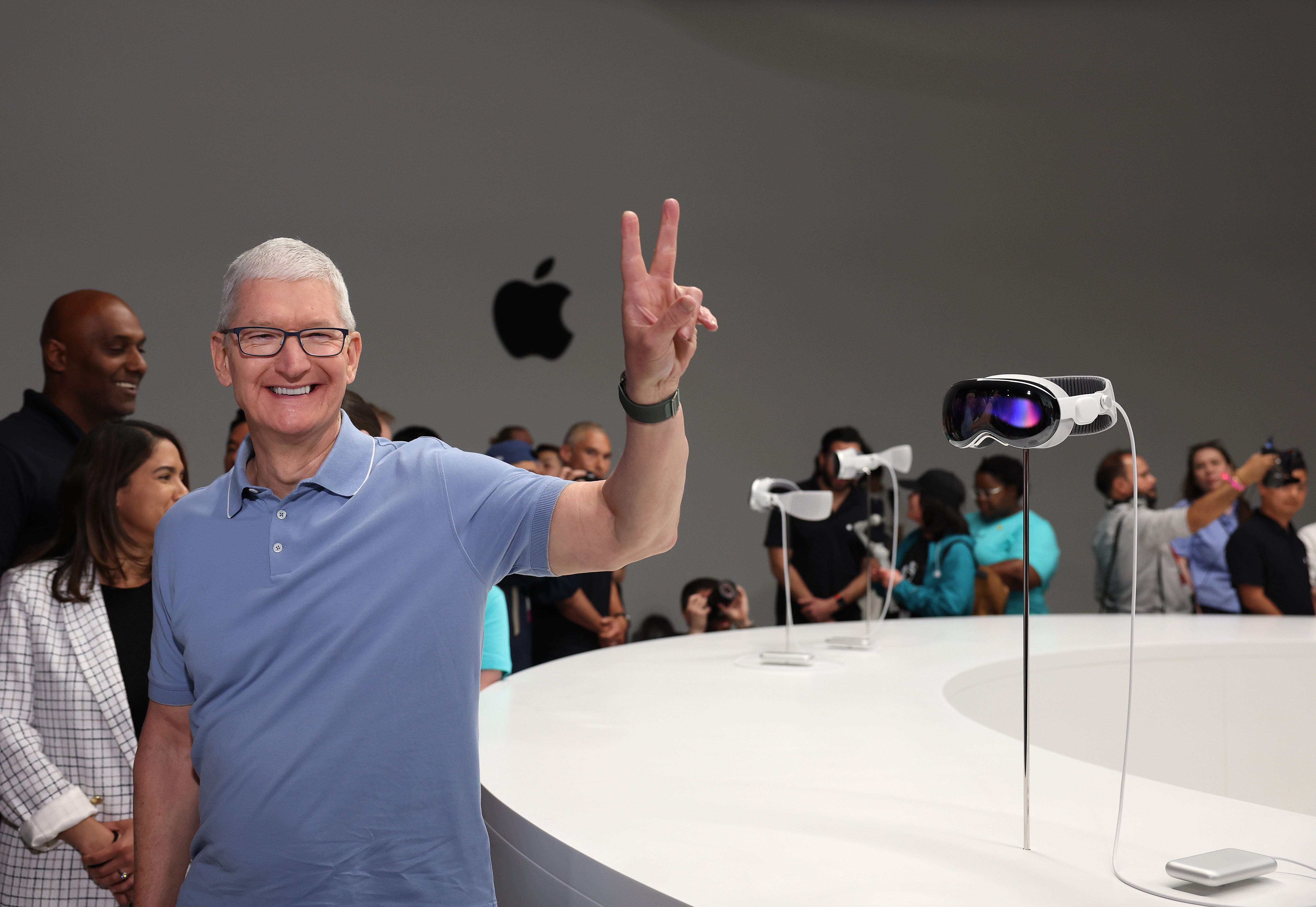Apple don’t want you to buy a headset - they’re selling a vision of the future
The Vision Pro headset might be Apple’s riskiest launch ever but they are in this new technology for the long haul, writes Andrew Griffin


It is very expensive, a little unwieldy and undeniably strange. Few people were asking for it and many more people now have lots of questions. Apple’s Vision Pro headset might be its riskiest launch ever. But it also could be the future.
That, at least, was Tim Cook’s pitch during his presentation at Apple’s Worldwide Developers Conference; he doesn’t only want you to buy the headset, he wants you to buy into the company’s vision of where computing is headed. It’s not just a headset but a whole platform, he suggested.
But what he also made clear was that Apple considers the launch only the beginning of its plan for “spatial computing”, a future where information is laid out on virtual screens in real space, rather than being tied to a slab of metal in your hand. The ideas behind that vision seem thoroughly sketched out; the vision itself seems more like a first draft, which might be why Apple stressed so often that it sees the headset as just the start.
“Today marks the beginning of a new era for computing,” said Tim Cook, Apple’s chief executive, in a statement. “Just as the Mac introduced us to personal computing, and iPhone introduced us to mobile computing, Apple Vision Pro introduces us to spatial computing.
“Built upon decades of Apple innovation, Vision Pro is years ahead and unlike anything created before – with a revolutionary new input system and thousands of groundbreaking innovations.”
Throughout its introduction, Apple stressed that the point was to see through the goggles and into the world, overlaid with virtual information. Much of the Vision Pro’s design is about trying to make it disappear: cameras allow you to see if someone approaches you while you are inside, for instance, and a screen on the outside of the headset lets you see the eyes of the person using it, so that it feels as if they are still in the room.
In practice, however, the Vision Pro is thoroughly visible: all of that technical wizardry is intended to get around the fact that it still means attaching a chunk of metal, glass and cloth over your eyes. The future, clearly, is supposed to be a version of the hardware that is transparent, like a pair of glasses rather than goggles – but the technology is such that it is not possible yet.
The software appears to be similarly early. All of the features shown off in the introduction are already possible in some form using traditional computers: most of the introduction simply showed existing apps such as FaceTime and streaming services displayed on virtual screens that were imposed by the headset, rather than on real ones. Mr Cook said that augmented reality “can unlock experiences like nothing we’ve ever seen”, but for now most of the experiences are ones we’ve seen before, albeit in a very unprecedented package.
Apple’s first generation devices are almost always more exciting for possibilities they represent than what they actually are, a fact that can be lost when they go on to turn into world-conquering hits. The first iPhone did not have an App Store, and the first Apple Watch hardly focused on fitness; today, those are the platforms’ defining features.
It took 10 years for the release of the iPhone X, which fulfilled the promise of the original iPhone, as a single sheet of smart glass that wrapped all the way across the front of the display. It is not inconceivable that the Vision Pro is intended to be thought of on an even longer timescale, as the foundation for a future that will not come good for many years.
For now, though, the Vision Pro remains way ahead of any other headset on the market, and it is a thoroughly innovative sketch of what Apple thinks that future will look like. For $3,499 (£2,822) or more, those willing to pay up will get the chance to be the first to experience it, and maybe help define it for those that come after.
It does not seem as if Apple plans for that future to be in everyone’s hands, at least at the start. The price alone will put them off: rumours had suggested it would cost $3,000, which had already drawn concern about the high cost. If it needed confirming, Apple added the word “Pro” to the name – the word it uses for the more expensive, more powerful hardware it makes – despite there being no mention of a normal version of the Apple Vision.
It was notable that even in the reveal of the headset, where Apple conjured up a world in which people were happily using it for their work and personal life, nobody else actually had a headset. The office in which the person using it for work was doing so was filled with people using normal computers; the FaceTime calls used to demonstrate that feature were attended by other people on traditional devices. (You could tell the latter because taking calls while wearing the headset means that it is attended by a 3D persona that is constructed using its camera; the result looks like calling a very well-constructed video game character.) Even in Apple’s dream society, the headset was niche.
The headset might be limited in its sales, but it does have to appeal to someone. It was not exactly clear from its introduction what kind of person it sees buying the technology, beyond them being someone with $3,500 plus taxes to spare. Some speculation ahead of the event had suggested that it would be mainly focused on developers, with the aim that they would buy the headset to make apps to be ready for when a future headset really went mainstream – if that was the case then there was no hint of it during the introduction. Likewise, it does not appear to be focused solely on business, since the keynote was packed with domestic, leisurely scenes and only light reference to working.
In reality the headset is likely to find its probably somewhat limited audience in a mix of those people. It will sell to developers who want to build the future and Apple fans who want to sample the future. All of them will be united in getting a peek at where we are going.
A lot of the hype around technology at the moment requires that people imagine a distant future. It is nowhere more present than in AI, where people are constantly implored to fast forward to a future where the technology will be much more powerful than now. The Vision Pro also points to the future, with much of the marketing looking beyond what it actually is and dreaming of what it could be; the difference for Apple is that it is offering a very good sketch of where it is going.
One of the key marketing lines for the new headset – said by Tim Cook on stage and echoed on Twitter by Apple’s marketing head Greg Joswiak – was that it is the first Apple product you “look through, not at”. What’s true of using the product might also be true of the strategy surrounding it: look through and past today’s headset, and you see what Apple hopes is the future of computing for years to come.





Join our commenting forum
Join thought-provoking conversations, follow other Independent readers and see their replies
Comments